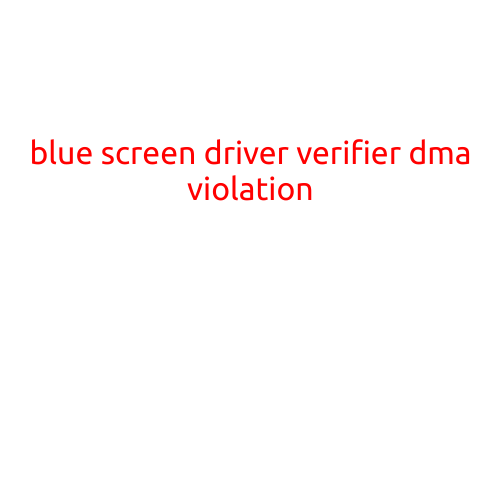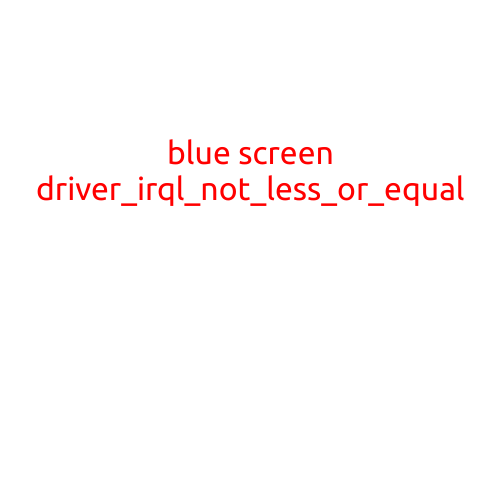
DPC Watchdog Violation: What Causes This Blue Screen of Death and How to Fix It
The Blue Screen of Death (BSOD) is a notorious error that can strike at any moment, leaving Windows users baffled and frustrated. One of the most common causes of this error is the DPC Watchdog Violation. In this article, we’ll delve into the world of DPC (Driver Power State) and explain what causes this error, as well as provide some practical solutions to fix it.
What is DPC Watchdog Violation?
The DPC Watchdog is a built-in mechanism in Windows that monitors the performance of the system’s drivers. These drivers are responsible for controlling various hardware components, such as network adapters, graphics cards, and storage devices. The DPC Watchdog checks the drivers’ response time to changes in the system power state. If a driver takes too long to respond or becomes stuck in an infinite loop, the DPC Watchdog can flag it as a violation.
Causes of DPC Watchdog Violation
Several factors can contribute to a DPC Watchdog Violation, including:
- Outdated or corrupted drivers: Drivers that are not updated or are corrupted can cause DPC Watchdog Violations.
- Overheating: High temperatures can slow down the system, causing drivers to respond slowly or become stuck.
- Hardware conflicts: Conflicts between devices or resource allocation issues can cause drivers to malfunction.
- Malware or viruses: Malicious software can compromise system drivers and cause DPC Watchdog Violations.
Symptoms of DPC Watchdog Violation
When you encounter a DPC Watchdog Violation, you’ll typically experience a Blue Screen of Death (BSOD) with the following error message:
“The DPC watchdog failed to detect a delayed response from your system. Your system is running low on resources.”
The screen may also display a list of drivers that are causing the issue, along with a recommendation to restart your system.
Fixing DPC Watchdog Violation
To resolve a DPC Watchdog Violation, try the following steps:
- Restart your system: This may seem obvious, but sometimes restarting your system can resolve the issue.
- Update drivers: Ensure that all drivers are up-to-date and functioning correctly. You can do this by visiting your device manufacturer’s website or using a driver update tool like Driver Talent or Snappy Driver Installer.
- Disable unnecessary devices: Disable any unnecessary devices or peripherals to reduce system resource usage.
- Check for malware: Run a full scan with your antivirus software to detect and remove any malware or viruses.
- Try a system restore: If you’ve made recent changes to your system, try restoring to a previous point when the issue wasn’t present.
- Check for overheating: Ensure that your system is running at a reasonable temperature. You can use software like SpeedFan or HWMonitor to monitor system temperatures.
Preventing DPC Watchdog Violation
To reduce the likelihood of a DPC Watchdog Violation, follow these best practices:
- Keep your system up-to-date: Regularly update your operating system and drivers to ensure you have the latest patches and fixes.
- Monitor system temperatures: Regularly check system temperatures to avoid overheating issues.
- Disable unnecessary startup programs: Disable any unnecessary programs that launch at startup to reduce system resource usage.
- Check for hardware conflicts: Identify and resolve any hardware conflicts or resource allocation issues.
In conclusion, the DPC Watchdog Violation is a common error that can occur due to various reasons. By understanding the causes and symptoms of this error, as well as the practical solutions outlined above, you can effectively fix and prevent DPC Watchdog Violations from occurring in the future.





